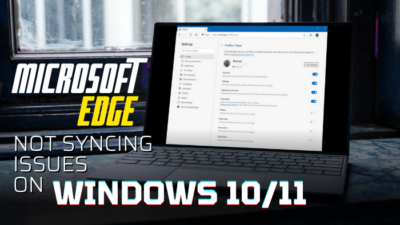Though maintaining professionalism during a Teams meeting is essential, using a suitable background for meetings and video calls always — can be crucial.

That’s where the Teams video blur feature comes in. It lets you blur the background of your video calls, leaving you clear and focused. In this article, I will show you how to use Microsoft Teams’ blur background feature on your different devices.
How to Blur Teams Background Before a Meeting or Call
To use Team’s background blur feature on a Windows PC, start a video call on Microsoft Teams and click on the three-dot icon in the call controls. Then, select Blur my background from the menu, and Teams will automatically blur the surroundings behind you.
But the steps differ for other devices like Mac, iPhone, and Android.
I always want to maintain a professional environment during online meetings. But the situation in my room isn’t always up to the mark. However, this Blur filter helped me solve this issue very effectively.
Follow these steps to blur Teams background before a meeting or call:
On Windows
- Join a Teams meeting or start a video call.
- Click on Video Effects and select the Blur option.
- Click the Join Now button.
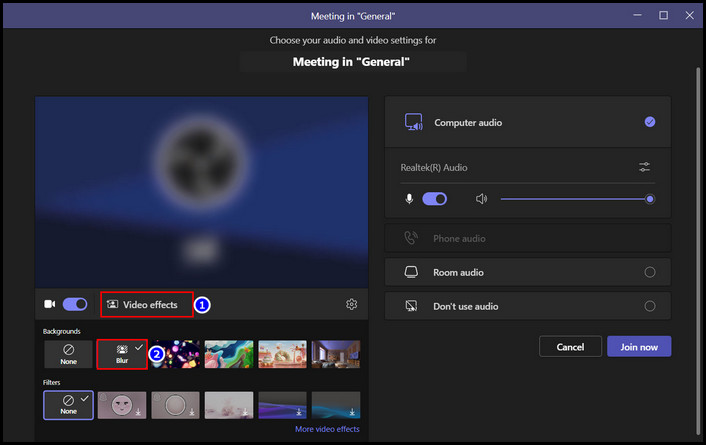
And Microsoft Teams will automatically blur the background behind you.
Note: You can also use similar steps for the web/browser version of MS Teams. But in Teams’ web/browser version, the Video Effects option is renamed as Background filters.
However, when you call someone out of your organization, you can’t change your background before or during calls.
On Mac
- Open the Teams app and start or join a new meeting.
- Click the Person icon in the video preview.
- Select Blur and click Join Now to begin.
Using these steps, you can make your background blur before joining or starting a meeting with your Teammates.
On Mobile
The blur option on Microsoft Teams is especially helpful when you join a session using your mobile phone because we use our phones for office meetings outside our house or workspace.
And this blurring feature helps us keep our surroundings private or eliminate distractions.
Luckily the latest Android (12 or newer) and iPhone(16.4 or newer) versions of Teams have a similar interface. So you can use the same steps for both devices.
Here’s the method to blur Microsoft Team’s meeting background on a mobile device:
- Open the Teams app and go to your selected channel.
- Tap the video meeting icon and turn on the Video.
- Click the Background Effects (iPhone) or Change Background (Android) option and choose Blur.
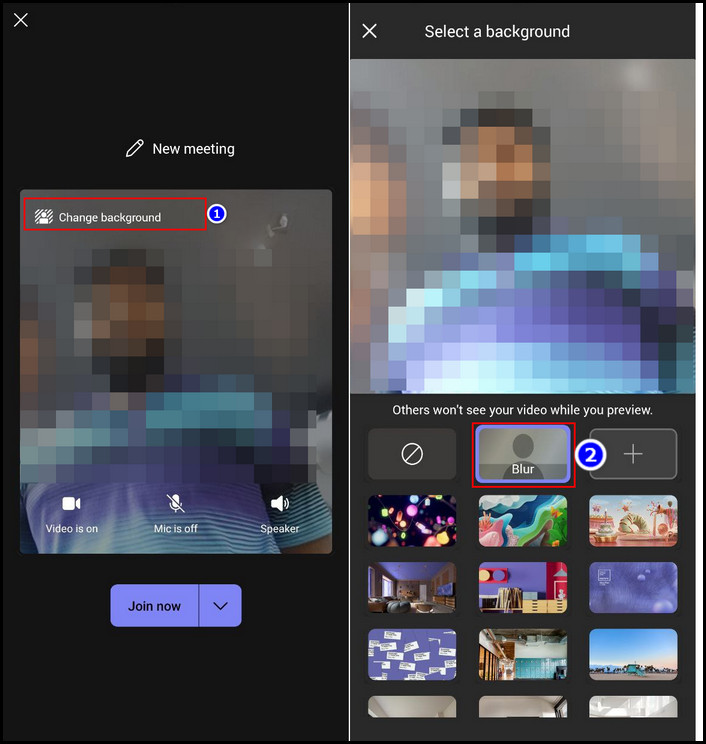
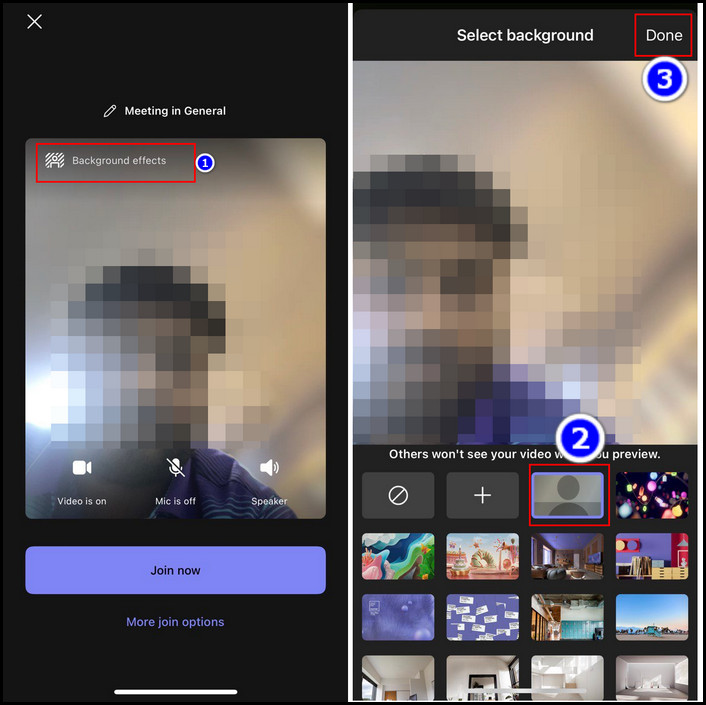
- Tap Done and then Join Now to start the meeting.
After completing the steps, you will join your meeting with blurred surroundings.
How to Blur Your Background During a Meeting in MS Teams
Not only can you blur Teams’ background before a meeting or call, but you can also dim your background during a meeting/call.
Follow this section to blur out the background in Teams during a meeting:
For Windows
- Start or join a meeting in Microsoft Teams.
- Click on the 3-dot menu and select Video Effects.
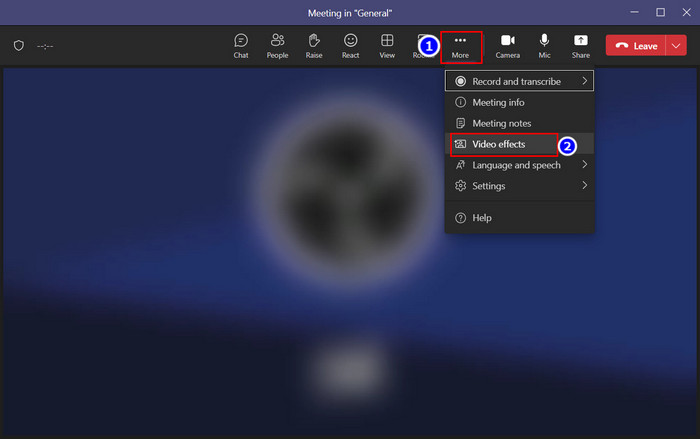
- Select Blur and click Preview.
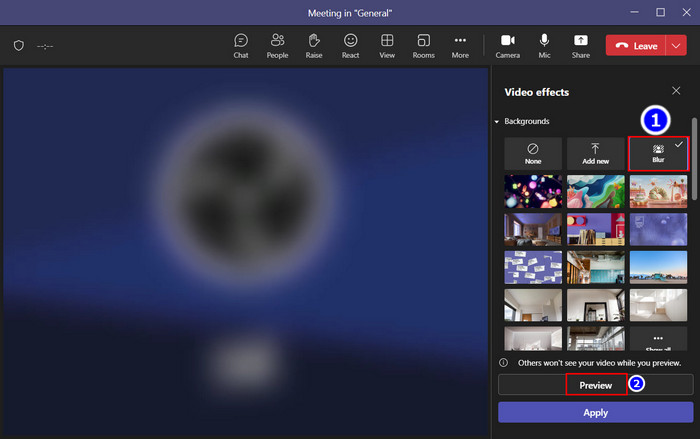
- Click on Apply and turn on Video option.
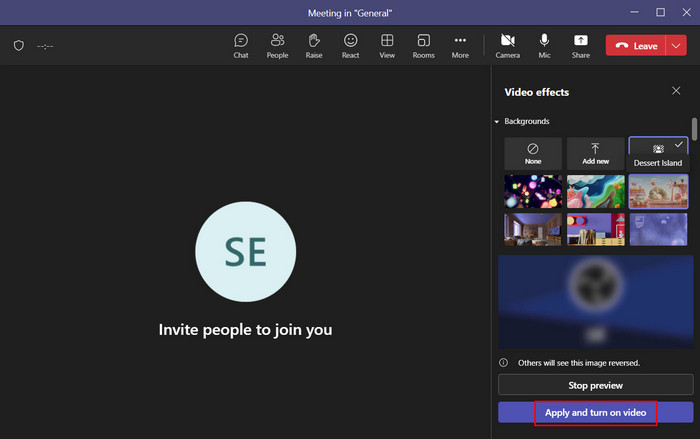
And that’s it! After completing the steps, the Teams will haze your background during the meeting.
Note: As for the web/browser version of Microsoft Teams, you need to use the Background Effects option instead of the Video Effects option in the 3-dot (more option) menu, and the rest of the process is the same as above.
For Mac
- Join the Teams meeting from your MacBook.
- Click the 3-dot icon and select the Background Effects option.
- Choose Blur from the list.
- Click Preview, then Apply option.
That’s it! After finishing this process, Microsoft Teams will blur your background in the meeting.
On Mobile
If you forget to turn on the blur filter before a meeting/call, you can do so during the video call/meeting.
Follow these steps on your mobile device to enable the Blur filter during a Teams meeting:
On Android
- Click the 3-dot menu during the meeting.
- Select the Change Background option.
- Choose the Blur filter from the popup Window.
- Close the window.
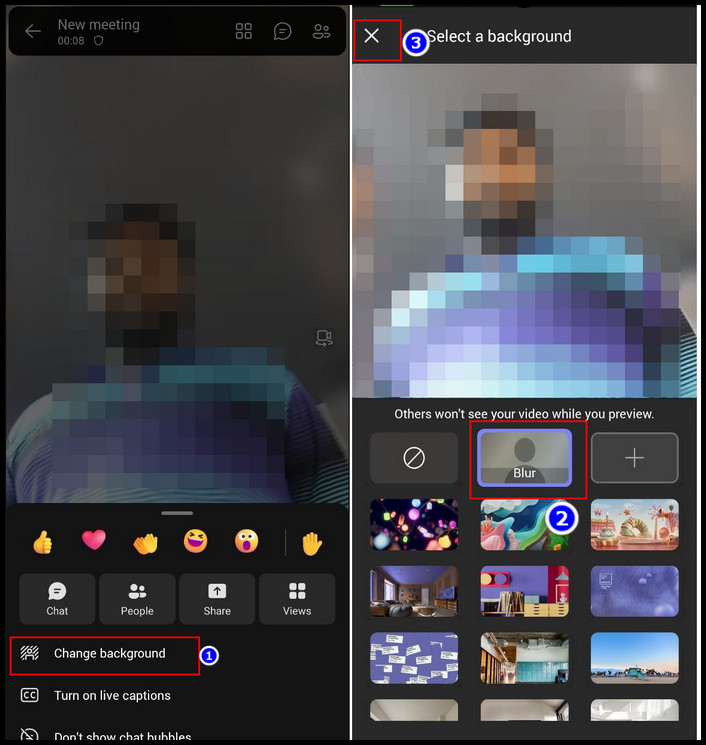
On iPhone
- Click the 3-dot menu during the meeting.
- Select the Background Effects option.
- Pick the Blur filter from the popup Window.
- Click Done.

After completing the steps, the Teams app will haze your background and bring the focus to your face.
However, sometimes you may find a simple blur effect boring or not setting the vibe. In that case, you can change your background on MS Teams during and after meetings. But being an expert, I recommend you not use too colorful backgrounds in a meeting.
Conclusion
In short, the blurring filter of Microsoft Teams helps you to stay focused during virtual meetings and keep any potential distractions out of sight. Now that you know how to change your background in Microsoft Teams, you can easily use this feature to your advantage and improve your virtual meeting experience.
Did you face any difficulties while applying the method of this article? Let me know in the comments section. I’d love to hear your thoughts and experiences with this feature.


